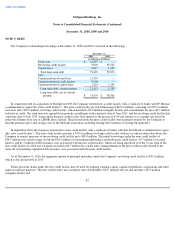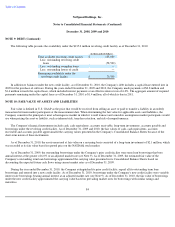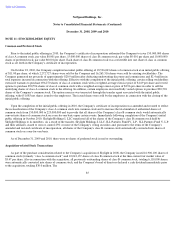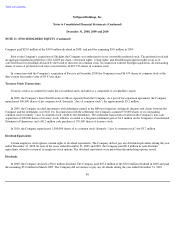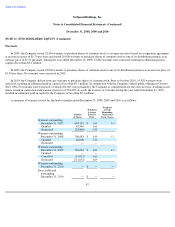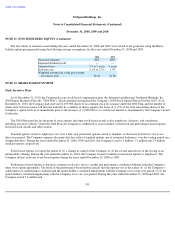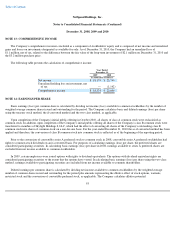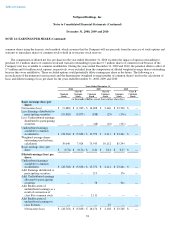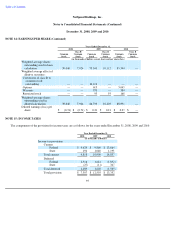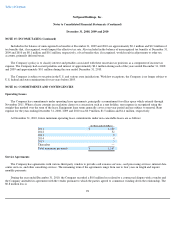NetSpend 2010 Annual Report Download - page 97
Download and view the complete annual report
Please find page 97 of the 2010 NetSpend annual report below. You can navigate through the pages in the report by either clicking on the pages listed below, or by using the keyword search tool below to find specific information within the annual report.
Table of Contents
NetSpend Holdings, Inc.
Notes to Consolidated Financial Statements (Continued)
December 31, 2008, 2009 and 2010
NOTE 12: SHARE BASED PAYMENT (Continued)
Options with the following characteristics were outstanding as of December 31, 2010:
Assumptions for Estimating Fair Value of Stock Option Grants
Through December 31, 2007, the Company used the Black-Scholes option pricing model for determining the estimated fair value for
stock-based awards. Beginning in January 2008 and going forward, the Company used the Binomial Lattice model for determining the
estimated fair value for stock option awards as the Company has determined the model best reflects the characteristics of the employee share
options in estimating fair value, particularly in light of the complexity of the performance awards issued in 2008 and 2009. The Binomial
Lattice model requires analysis of actual exercise behavior data and a number of assumptions including expected volatility, risk-free interest
rate, expected dividends, option cancellations, and forfeitures.
The following table summarizes the assumptions used to value options issued for the years ended December 31, 2008, 2009 and 2010:
The volatility assumption is based on the historical volatilities of comparable public companies. The dividend yield assumption is based
on the Company's expectation of future dividend payouts. The expected term of employee stock options represents the weighted average period
that the stock options are expected to remain outstanding. The Company derived the expected term assumption based on its historical
experience, while giving consideration to options that have lives less than the contractual terms and vesting schedules in accordance with
guidance set by the FASB. The risk-free interest rate assumption is based upon observed interest rates appropriate for the term of the
Company's employee stock options.
91
Exercise Prices Number of
Shares
Weighted
Average
Remaining
Contractual
Life (Years)
Weighted
Average
Exercise
Price Number
Exercisable
Weighted
Average
Exercise
Price
$0.25
-
$ 3.47
2,895,108
7.3
$
3.00
1,150,983
$
2.31
3.53
5,038,524
7.2
3.53
1,551,062
3.53
3.78
2,480,100
9.3
3.78
—
—
11.00
571,874
9.8
11.00
3,052
11.00
14.70
50,000
9.9
14.70
—
—
11,035,606
7.8
$
3.88
2,705,097
$
3.02
2008 2009 2010
Expected volatility
44.5%
-
48.8%
59.8%
51.2%
-
58.4%
Expected dividend yield
—
—
—
Expected term
6.0
-
9.3 years
7.7
-
9.4 years
6.0
-
8.5 years
Risk free rate
2.6%
-
4.0%
3.3%
2.6%
-
3.8%
Weighted average fair value of options at grant
date
$1.64
$2.13
$3.30



